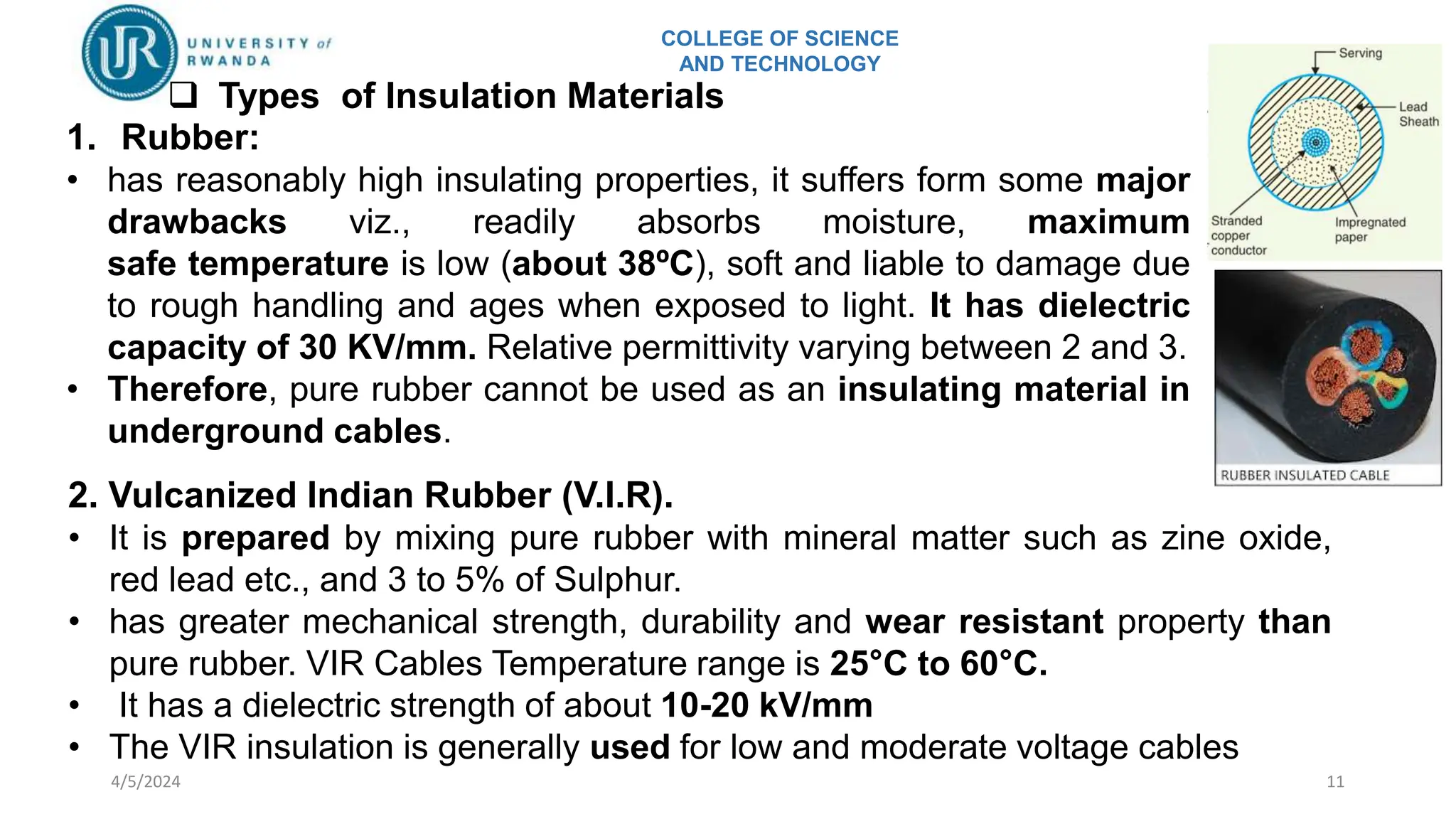The document discusses the principles and applications of underground transmission lines and cables, including their construction, types, and requirements. It elaborates on the various insulating materials, cable classifications based on voltage and core configurations, as well as installation methods. The information emphasizes the significance of selecting appropriate cables for different electrical systems and environmental conditions, particularly in urban areas where overhead lines are impractical.















































![COLLEGE OF SCIENCE
AND TECHNOLOGY
4/5/2024 48
These electrostatic fields give rise to core-core capacitances Cc and conductor-
earth capacitances Ce as shown in Fig. (ii).
The three Cc are delta connected whereas the three Ce are star connected, the
sheath forming the star point [See Fig. (iii)].](https://image.slidesharecdn.com/undergroundofelectricalpowersystem-240405131324-54d5a857/75/underground-of-electrical-power-system-pptx-48-2048.jpg)
![COLLEGE OF SCIENCE
AND TECHNOLOGY
4/5/2024 49
They lay of a belted cable makes it reasonable to assume equality of each Cc and
each Ce. The three delta connected capacitances Cc [See Fig. (i)] can be
converted into equivalent star connected capacitances as shown in Fig. (ii). It can
be easily shown that equivalent star capacitance Ceq is equal to three times the
delta capacitance Cc i.e. Ceq = 3Cc.](https://image.slidesharecdn.com/undergroundofelectricalpowersystem-240405131324-54d5a857/75/underground-of-electrical-power-system-pptx-49-2048.jpg)
![COLLEGE OF SCIENCE
AND TECHNOLOGY
4/5/2024 50
The system of capacitances shown in Fig. (iii)
reduces to the equivalent circuit shown in
Fig. (i). Therefore, the whole cable is
equivalent to three star-connected
capacitors each of capacitance [See Fig. (ii)]](https://image.slidesharecdn.com/undergroundofelectricalpowersystem-240405131324-54d5a857/75/underground-of-electrical-power-system-pptx-50-2048.jpg)

























